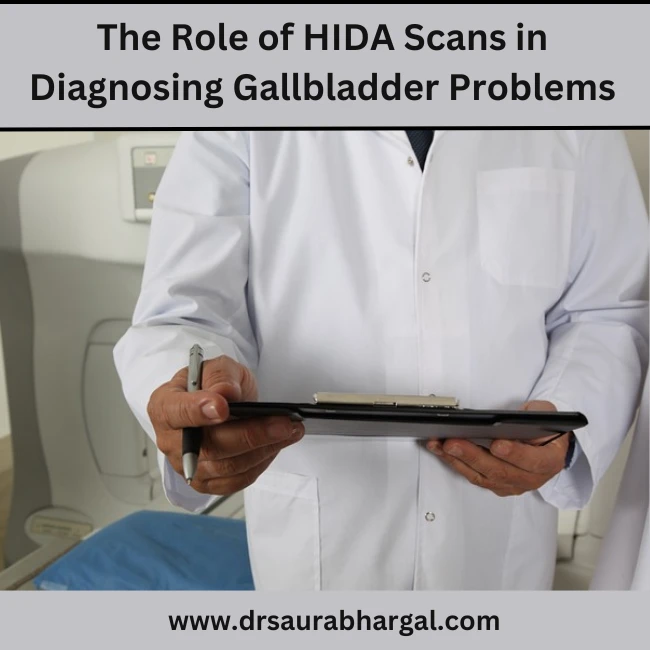Gallbladder issues can be a source of persistent discomfort and pain, affecting millions of people worldwide. When symptoms like abdominal pain, nausea, and digestive problems arise, it’s crucial to diagnose the root cause accurately. In the realm of gallbladder diagnostics, one powerful tool stands out: the HIDA scan. In this guest post, we will explore the role of HIDA scans in diagnosing gallbladder problems, shedding light on this valuable medical procedure.
Table of Contents
ToggleUnderstanding the Gallbladder
Before delving into the diagnostic aspect, let’s briefly understand the gallbladder’s role in digestion. The gallbladder, a small pear-shaped organ, aids in digestion by storing bile produced by the liver. When you consume fatty foods, the gallbladder contracts and releases bile into the small intestine to help break down fats. Problems arise when the gallbladder becomes inflamed, develops stones, or experiences dysfunction, leading to various symptoms.
The HIDA Scan Explained
HIDA stands for Hepatobiliary Iminodiacetic Acid, a radiopharmaceutical used in this diagnostic procedure. The HIDA scan is a nuclear medicine test that provides detailed images of the gallbladder, liver, and bile ducts. It works by tracking the flow of bile from the liver to the gallbladder and into the small intestine.
Here’s how the HIDA scan works:
Preparation: You will be asked to fast for several hours before the test to ensure the gallbladder is full.
Injection: A small amount of the radioactive tracer is injected into your vein. This tracer mimics the behavior of bile in your body.
Imaging: A gamma camera is used to capture images of the tracer’s movement in your liver, bile ducts, and gallbladder.
Evaluation: Radiologists analyze the images to assess the gallbladder’s function and identify any blockages or abnormalities in the bile flow.
Diagnosing Gallbladder Problems
Cholecystitis: HIDA scans can diagnose acute or chronic inflammation of the gallbladder (cholecystitis). If the gallbladder fails to fill or empty properly, it indicates dysfunction.
Gallstones: Gallstones can obstruct the bile ducts and lead to severe pain. HIDA scans can detect these blockages, helping doctors determine the need for surgery.
Biliary Dyskinesia: Some patients experience symptoms similar to gallbladder issues, even when traditional tests show no abnormalities. HIDA scans can reveal biliary dyskinesia, a condition where the gallbladder doesn’t contract properly.
Bile Duct Issues: The test can identify problems in the bile ducts, such as strictures or leaks.
Advantages of HIDA Scans
HIDA scans offer several advantages in diagnosing gallbladder problems:
Non-Invasive: Unlike some other diagnostic procedures, HIDA scans do not require invasive surgery. They are safe and relatively painless.
High Accuracy: HIDA scans provide accurate information about gallbladder function and bile flow, helping doctors make informed decisions about treatment.
Customized Treatment: By precisely diagnosing the issue, healthcare providers can tailor treatment plans to the patient’s specific condition, whether it involves medication, dietary changes, or surgery.
Quick Results: HIDA scans are usually completed within a few hours, allowing for timely diagnosis and treatment initiation.
Conclusion
Gallbladder problems can be debilitating, affecting one’s quality of life. Timely and accurate diagnosis is crucial to provide effective treatment. HIDA scans play a vital role in diagnosing gallbladder issues by offering detailed insights into gallbladder function and bile flow. This non-invasive, safe, and efficient procedure has become a cornerstone in the field of gallbladder diagnostics, enabling healthcare providers to make informed decisions and provide the best possible care for patients experiencing gallbladder-related symptoms. If you’re experiencing abdominal pain or suspect gallbladder issues, don’t hesitate to discuss the potential benefits of a HIDA scan with your healthcare provider—it might be the key to finding relief and improving your overall well-being.








